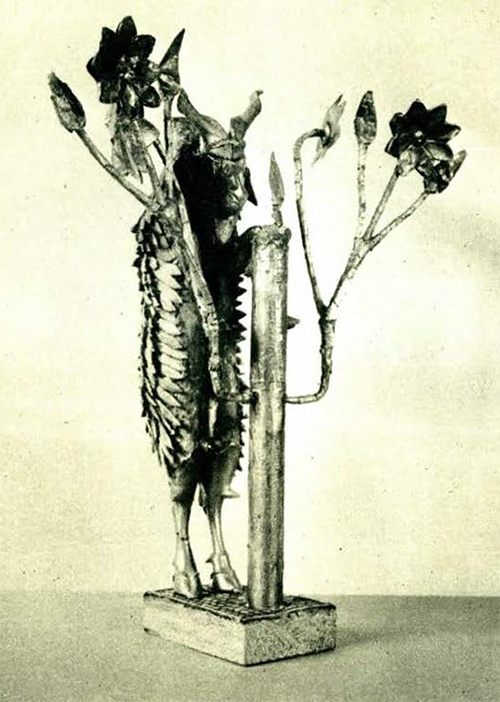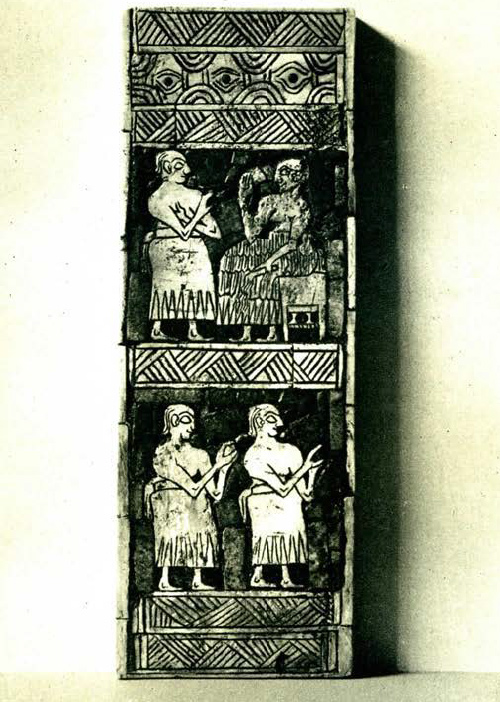THE Museum’s share of the finds during last winter’s excavations at Ur of the Chaldees, which were exhibited at the British Museum in the summer, arrived at the end of January, and were shown at a Private View at the Members’ Fortnightly Tea on February 4th. They will shortly be on public view in the Ur gallery.

Museum Object Number: 30-12-702


Although fewer in number than the pieces representing two seasons’ finds which formed last spring’s special exhibition, the collections this year include some specimens as spectacular as any from previous years. Unique among archaeological discoveries were the two figures of standing goats fashioned of gold, lapis, and shell over a wooden core, one of which [Plate I] falls to our share. Another striking piece, a large silver harp, is ornamented with a similar figure in silver. From the same great death-pit comes an astounding amount of gold and semi-precious stone jewelry: earrings, diadems, necklaces, bracelets, trinkets. One of the skulls [Plate III] removed intact illustrates superbly the amount of exact data Mr. Wooley has preserved for reconstruction of the necklaces and for studies of the manner in which the ornaments were worn.
The inlaid plaques shown in Plate II are similar technique to the figures in the inlaid standard and to the figures in the inlaid standard and to the fine inlay on the front of the harp we received last year, with which they rank as priceless documents of early Sumerian Art. One of several very fine seal cylinders in the collection is reproduced in a line drawing on the cover of the present Bulletin.

